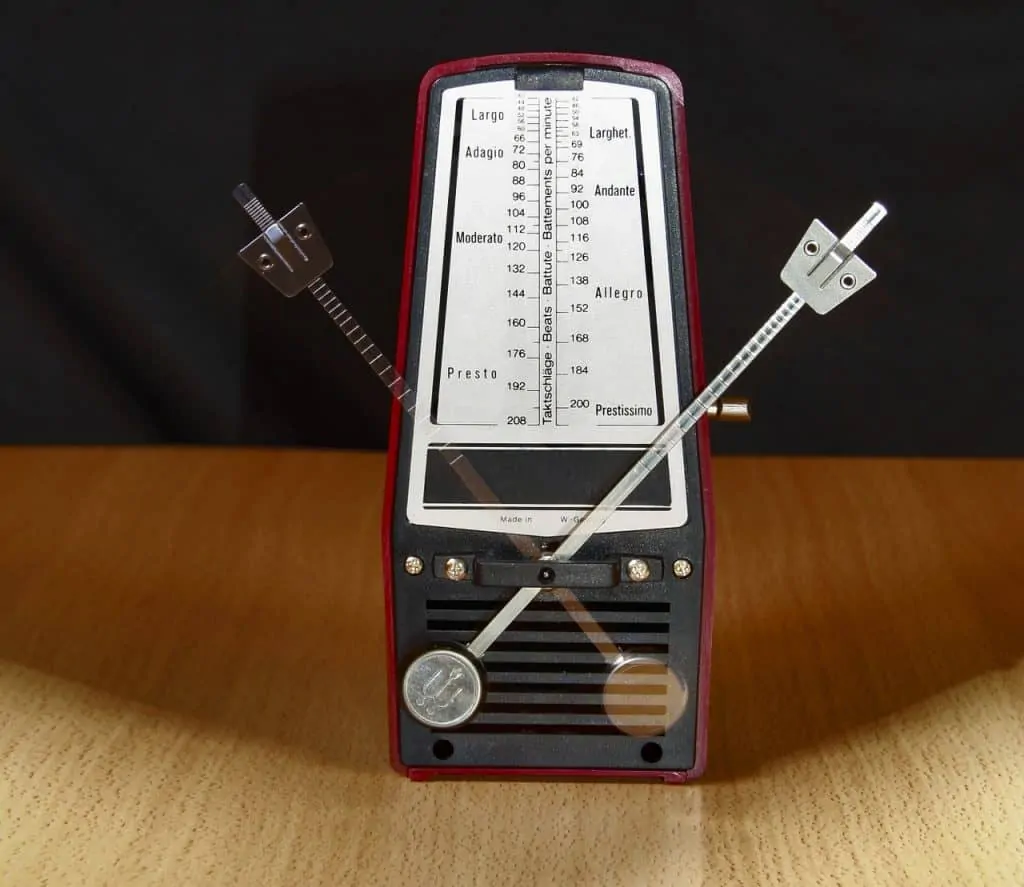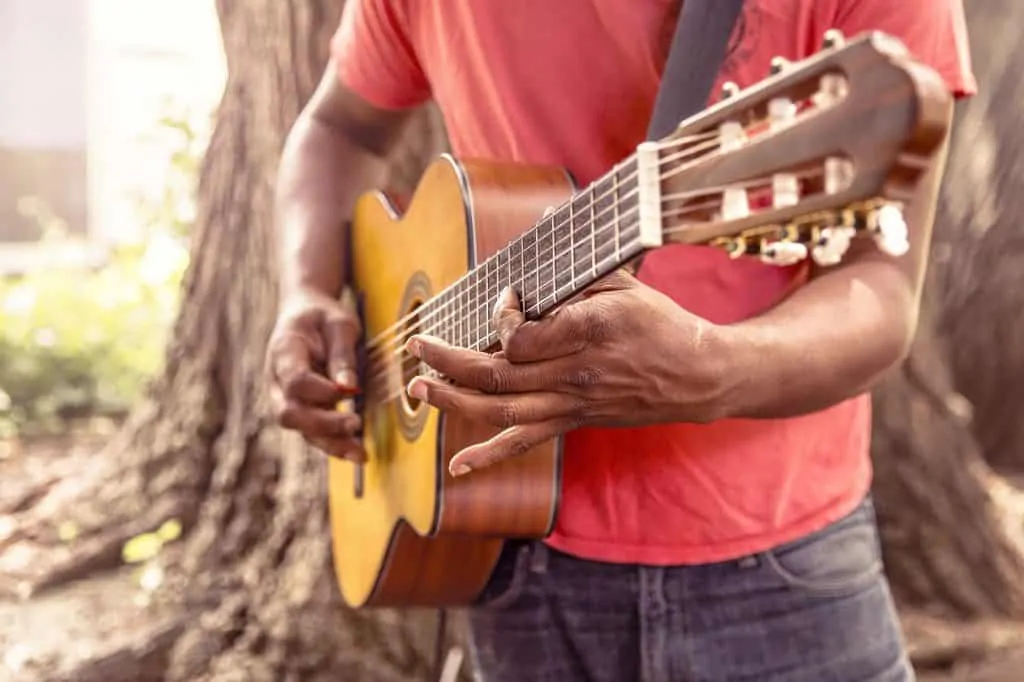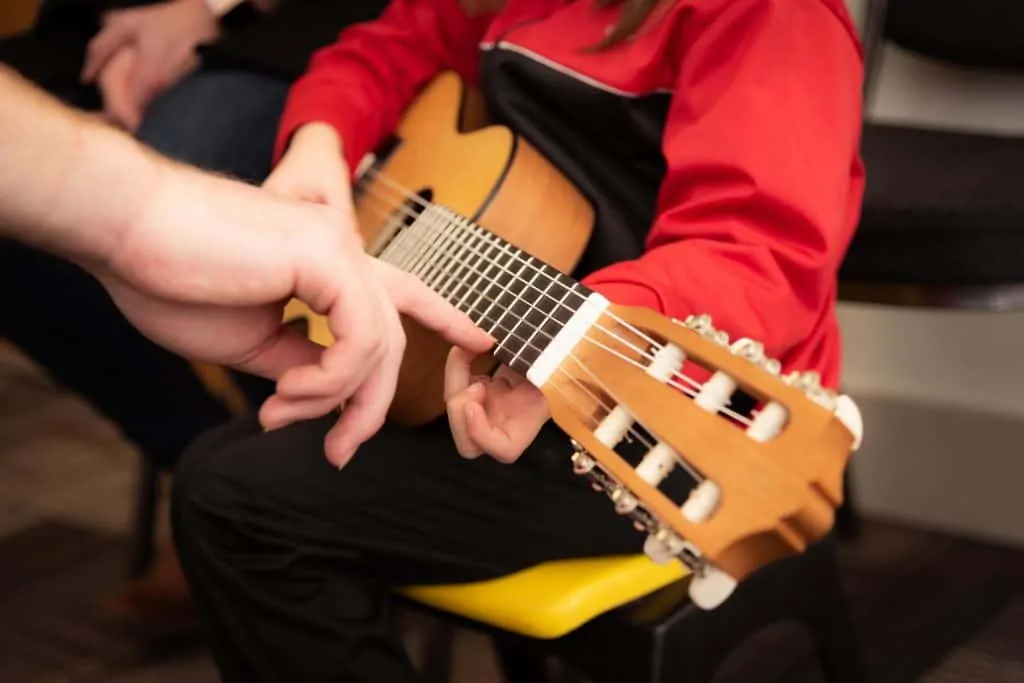Muscle memory can be a confusing topic, but it’s important to understand if you want to master the guitar. It can take a while to learn guitar, but incorporating muscle memory exercises can actually help you learn guitar faster.
How Can Muscle Memory Exercises Help With Guitar?
Neurons are the key to developing muscle memory
Before we talk about muscle memory exercises, let’s define what “muscle memory” actually means. It could be referring to two things: your muscle fibers and/or your neurons.
Muscle Memory In Muscle Fibers
When you first start playing guitar, it may hurt your hand. That’s because your muscles are not used to conforming your hand into the necessary shapes. You’ll have to work on making your hand do the things it needs to do. Muscle memory exercises help with this.
But once you get to a place where your muscles get used to playing, say, a C chord, you can take a break for a while, come back to the guitar, and still be able to play a C without trouble. This is because your muscle fibers “remember” what they used to do when playing that chord. The fibers themselves remember how to play the chord.
There are some different scientific theories around why this happens, but because this article is about muscle memory exercises specifically, we won’t get too scientific.
Muscle Memory In Your Brain
<iframe width=”560″ height=”315″ src=”https://www.youtube.com/embed/oRmOERq7vQQ” frameborder=”0″ allow=”accelerometer; autoplay; encrypted-media; gyroscope; picture-in-picture” allowfullscreen></iframe>
When you learn to ride a bike, you may think it’s the fibers, the actual muscles, that remember what to do. While the muscles do need to become strengthened and while fibers do remember, the remembering mainly happens in the brain.
Ainslie Johnstone, a neuroscientist at Oxford University, writes about this idea.
“Although certain skills, like cycling or perfecting a tennis serve, might require the strengthening of certain muscles, the processes that are important for learning and memory of new skills occur mainly in the brain, not in the muscles,” she says.
So because you play guitar, your brain has stored away muscle memories for playing a C chord (just to stick with the same example). If you’re playing Leonard Cohen’s “Hallelujah,” your brain says, “Okay, left hand, time to play a C major.” The brain goes into its storehouse of muscle memories, pulls the “C major” file from the filing cabinet, and sends it down to the left hand.
And because the muscle fibers receiving that signal to play a C major have played it many times before, forming the right shape on the right strings happens quicker.
Muscle Memory Exercises For Playing Guitar
Hack your muscle memory by practicing guitar with certain methods
So now that we have a brief overview of how muscle memory works, let’s move on to some muscle memory exercises you can start doing today. Doing these things on the regular can really improve your guitar playing.
Practice (And Practice Correctly)
Not only is practicing crucial to learning guitar, but practicing correctly is just as important. You can practice several hours a day, but if you’re playing things incorrectly, you’ll end up going back to square one.
So that’s why you should always double-check how you’re playing a chord. Pay attention to what fingers you should use and even how your wrist and palm should be positioned. This is where hiring a guitar teacher can help, but you can also find answers to these types of questions on YouTube or through a quick Google search.
You don’t want to teach your muscle fibers and brain the wrong way to play something, because then you’ll need to re-learn it all.
Slow It Down And Use A Metronome
Using a metronome at slow speeds can help train your muscle memory
Once you learn the chords to a song you want to learn, try playing it at a much slower speed than the original recording. Use a metronome and turn down the BPM. This helps your muscles and brain learn the chords progression and strumming pattern more easily.
Once you learn how to play the song slowly, all you have to do is just play it a little faster until you can play along with the recording.
Learn Just One Part Of A Song
Don’t bite off more of a song than you can chew.
You don’t need to learn an entire song right away — try learning just the first verse or just the chorus. Once you nail that part, then move onto the next section. With each part of the song you learn, go slowly, making sure you are playing the chords correctly and strumming well.
This is one of those frustrating muscle memory exercises, but it exercising is hard. Many small steps will get you to where you want to go.
One Finger At A Time
Placing one finger at a time helps build muscle memory
When you’re switching chords, it’s okay to place one finger at a time if you need to. After that, you can try placing two finger at a time. And pretty soon, you’ll be able to get all your fingers placed at the same time.
Also, it’s perfectly fine for one finger to get to the next chord before the others. All you have to do is make sure the first finger is on the string that you’ll be strumming first (and so on with each finger and string).
For example, in a G major chord, your second finger is on the third fret on the low E string. That has to be the first finger you place. Then your first finger goes on the second fret on the A string right before you strum it. By the time your guitar pick gets to the high E string (where your little finger should be), you’ll have all your fingers placed.
Practice The Chords But Not The Strumming
Pretend like you don’t know how to strum and just focus on switching between chords
If combining chord structures and strumming patterns is too overwhelming right now, just focus on your left hand (for right-handed guitarists). Give your strumming hand a break. Place your fingers in the chords shapes and go through a chord progression, seeing how quickly you can switch.
This is one of those muscle memory exercises that not many people think about. But it allows you to pay attention to forming chords and takes out the extra step of strumming.
Practice The Strumming But Not The Chords
This is how I played guitar before I knew how to actually play guitar. I’d sit there with my mom’s Yamaha acoustic and just strum rhythms on the open strings. I would stop the ringing of the strings with my left hand and make my own rhythms.
Even though I thought I was pretty cool, I realize now it sounded terrible. But it gave me an affinity for strumming rhythmically. And I think the thing that separates okay guitarists from great guitarists is good rhythm.
As far as muscle memory exercises go, this one is unconventional. But it works.
As you try these muscle memory exercises, you’ll figure out which ones you like best. Once you do, do them regularly and you should quickly see your muscle memory kicking in, helping you learn guitar faster.





